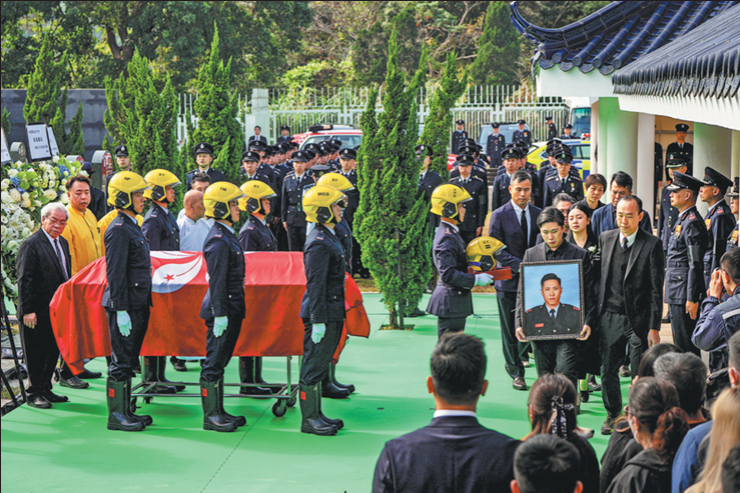Chinese astronauts fix space station power supply after debris hit
Xinhua | Updated: 2024-04-24 14:30

JIUQUAN -- The Shenzhou XVII crew in China's space station have repaired the core module's solar wings, which had been damaged by space debris, through two spacewalks during the country's first extravehicular maintenance mission, the China Manned Space Agency said Wednesday.
The crew is scheduled to return to Earth on April 30 after completing the in-orbit work handover to the Shenzhou XVIII crew.
The repair work highlighted the role of a manned spacecraft in coping with unintended problems in orbit, said Lin Xiqiang, deputy director of the CMSA at a press conference.
The space station's core module Tianhe had suffered a partial loss of power supply due to the impact of the space debris on the solar wing's power cables, Lin said.
Noting that the space station has executed maneuvers on multiple occasions to evade space debris impacts, Lin said preventive measures were taken to mitigate hazards stemming from the growing human activities in space in recent years.
China has enhanced its capability to precisely forecast the orbits of the space station and small low-orbit targets, optimized the procedures for space collision warning and avoidance, and reduced the false alarm rate by 30 percent, according to Lin.
In the future, the high-definition camera on the space station's robotic arm, along with the extravehicular hand-held cameras of the astronauts, will be used to inspect the space station's extravehicular status and analyze the likelihood and mechanism of small debris impacts.
The Shenzhou XVIII crew, scheduled for launch on Thursday, will be tasked with installing space debris protection reinforcements for extravehicular piping, cables and critical equipment during their extravehicular activities, Lin said.
A system for monitoring and locating leaks in the space station's modules has been deployed and a space station pressure emergency response system has been developed, significantly increasing the in-orbit troubleshooting time allowed for astronauts.
China has regularly released orbit parameters on CMSA's official website and established a safety communication mechanism with major space agencies across the world to implement timely information exchange, Lin added.
























